Disability Justice in Yoga
How Ady Barkan Embodies Seva
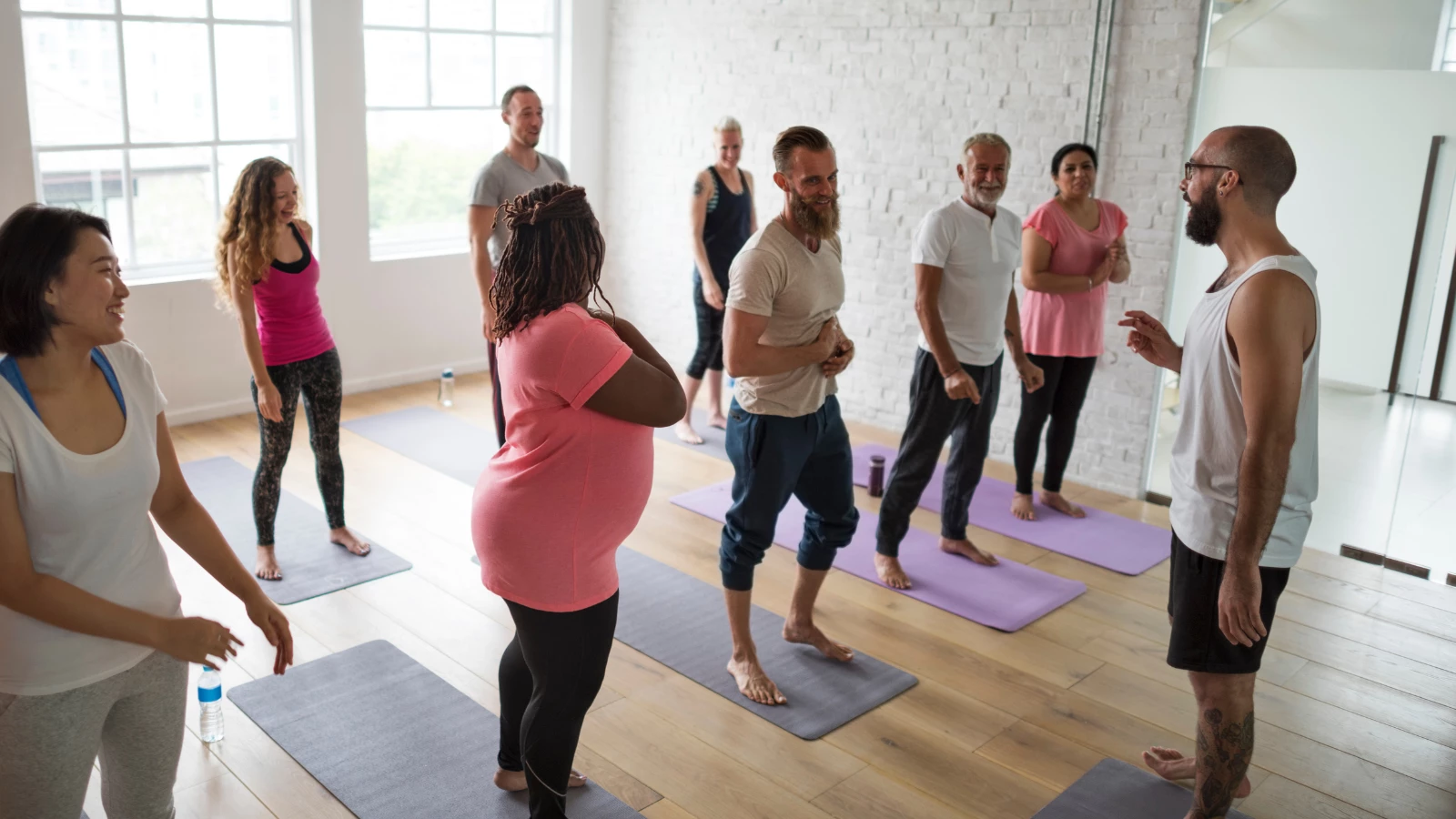
Article At A Glance
Seva, or selfless service, is a yogic concept that is often associated with volunteer or humanitarian work. There are countless yoga organizations today that advertise themselves as being a path to Seva, but we can also find real-life examples of Seva and disability justice advocates working tirelessly in our communities. Ady Barkan is one such example.
Ady Barkan’s Fight for Disability Justice
Ady Barkan is an activist, father, and founder of the political action committee Be A Hero, which uses storytelling to influence healthcare policy. The pursuit of his Dharma (life purpose) to expand health care to all while living with ALS (amyotrophic lateral sclerosis) is the subject of the touching documentary Not Going Quietly. This film captured the parallel loss of his physical voice and the growth of his voice as an activist for disability justice.
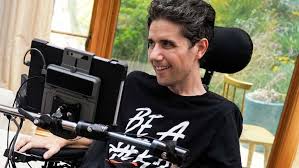 Since his ALS diagnosis in 2016, Ady Barkan’s muscles have atrophied, and he has become increasingly paralyzed. And yet, he has found innovative ways to work with his physical limitations to fight for universal healthcare and increased rights for people with disabilities. He now speaks through a device that tracks his eye movements to communicate with others, enabling him to converse with his family, meet with politicians, and speak to entire audiences of fans and
Since his ALS diagnosis in 2016, Ady Barkan’s muscles have atrophied, and he has become increasingly paralyzed. And yet, he has found innovative ways to work with his physical limitations to fight for universal healthcare and increased rights for people with disabilities. He now speaks through a device that tracks his eye movements to communicate with others, enabling him to converse with his family, meet with politicians, and speak to entire audiences of fans and
fellow activists.
On the surface, Ady Barkan may not seem to fit the stereotypical images of flexible people in designer yoga pants who we see practicing yoga on Instagram or magazine covers. But he is no stranger to using movement to create greater ease in his daily life. As his ALS has progressed, he has worked with an aide to perform daily gentle stretches to maintain mobility and navigate his ever-changing physical needs. In addition, yoga teacher, disability activist, and YogaUOnline contributor Jivana Heyman had the opportunity to share a private yoga session with Ady Barkan, which he recounts in detail in his 2020 article Yoga Therapy: Working with ALS.
Expanding Yoga to All: 6 Tips to Include Disability Justice in Yoga
As Jivana Heyman recounted in “Yoga Therapy: Working with ALS,” teaching yoga to people with disabilities can come with unexpected challenges. For example, Jivana Heyman attempted to correct Ady Barkan’s posture in their yoga session. But he didn’t realize that moving Ady from his habitual position would cause him to nearly choke on his saliva.
Of course, Jivana corrected his mistake and apologized profusely after returning Ady to his original position. But this anecdote shows how our knowledge of yoga postures and anatomy may need to be adapted when working with bodies with varying ranges of ability. The following are additional suggestions for making yoga classes more accessible to people with disabilities.
1. Examine Your Own Positionality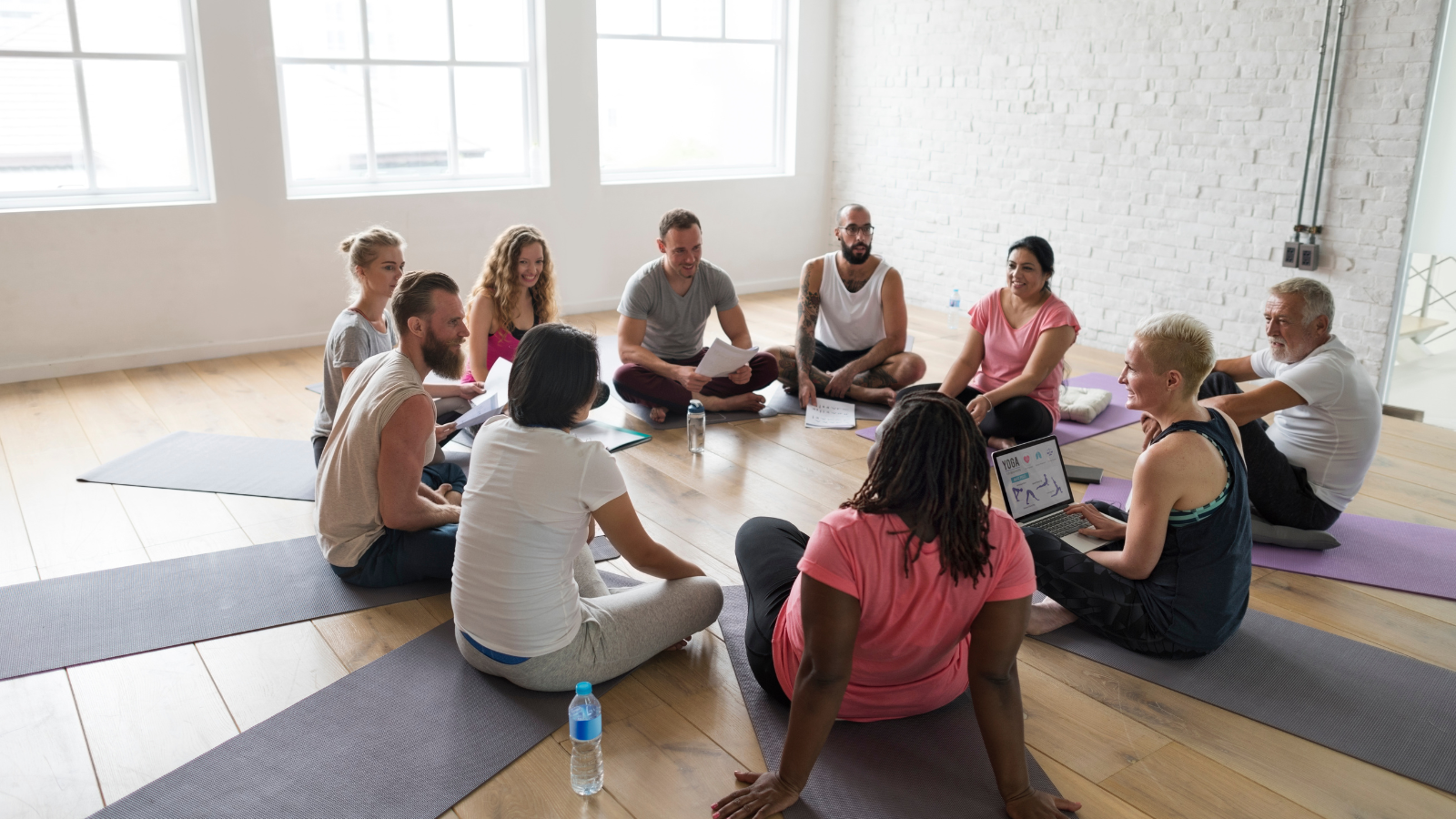
When teaching classes to varying levels of ability, it’s essential to have a firm understanding of the power dynamics that may be present in the room. Positionality refers to the understanding of your own level of privilege through factors such as race, education, income, gender, level of ability, and where you stand in the yoga room. As the person leading the yoga class, we have a certain level of power over our students as they look to us for guidance on how to move their bodies. With this power comes the responsibility to mold our classes into open, inclusive environments.
When examining positionality, your level of ability is also important to consider. If you are naturally flexible, you’ll want to be mindful of how you demonstrate yoga poses. What’s easy for you may be challenging or impossible for other students in the room.
2. Understand How Intersectionality Shapes the Yoga Space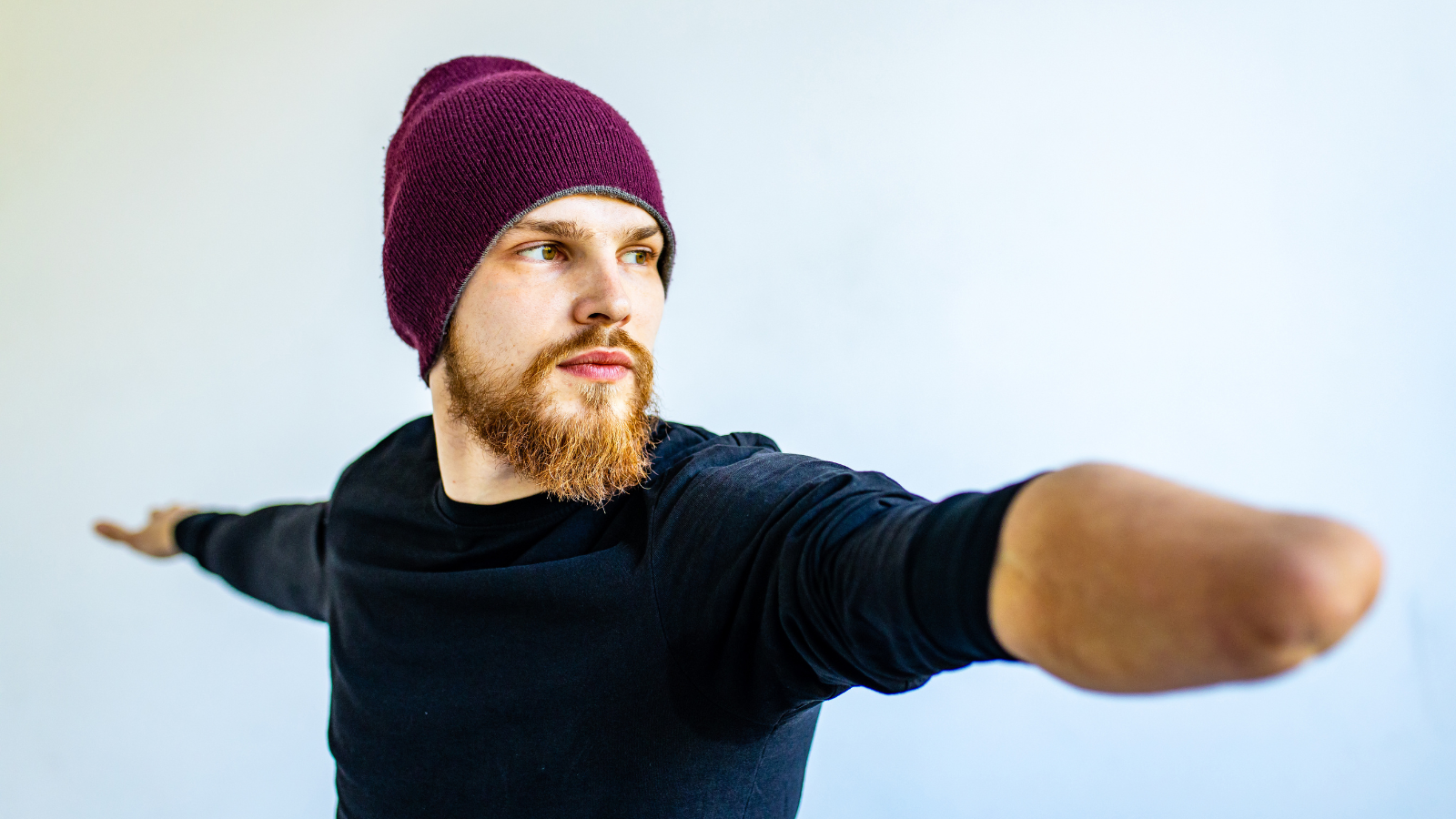
Similarly, intersectionality provides an understanding of how social factors like race, gender, and ability intersect to shape our social identity. It’s important to understand that the life experience of a disabled person is defined by more than their disability alone. For example, a Black queer disabled person living below the poverty level may face substantially greater levels of oppression than a White cis-gendered disabled person who comes from a wealthy background.
Being able to afford and even make it in the door to a yoga class may be a substantially greater challenge for a disabled person who faces greater levels of oppression. When making classes accessible to people with disabilities, we can also consider making them more accessible to their other social identities.
3. Teach Collaboratively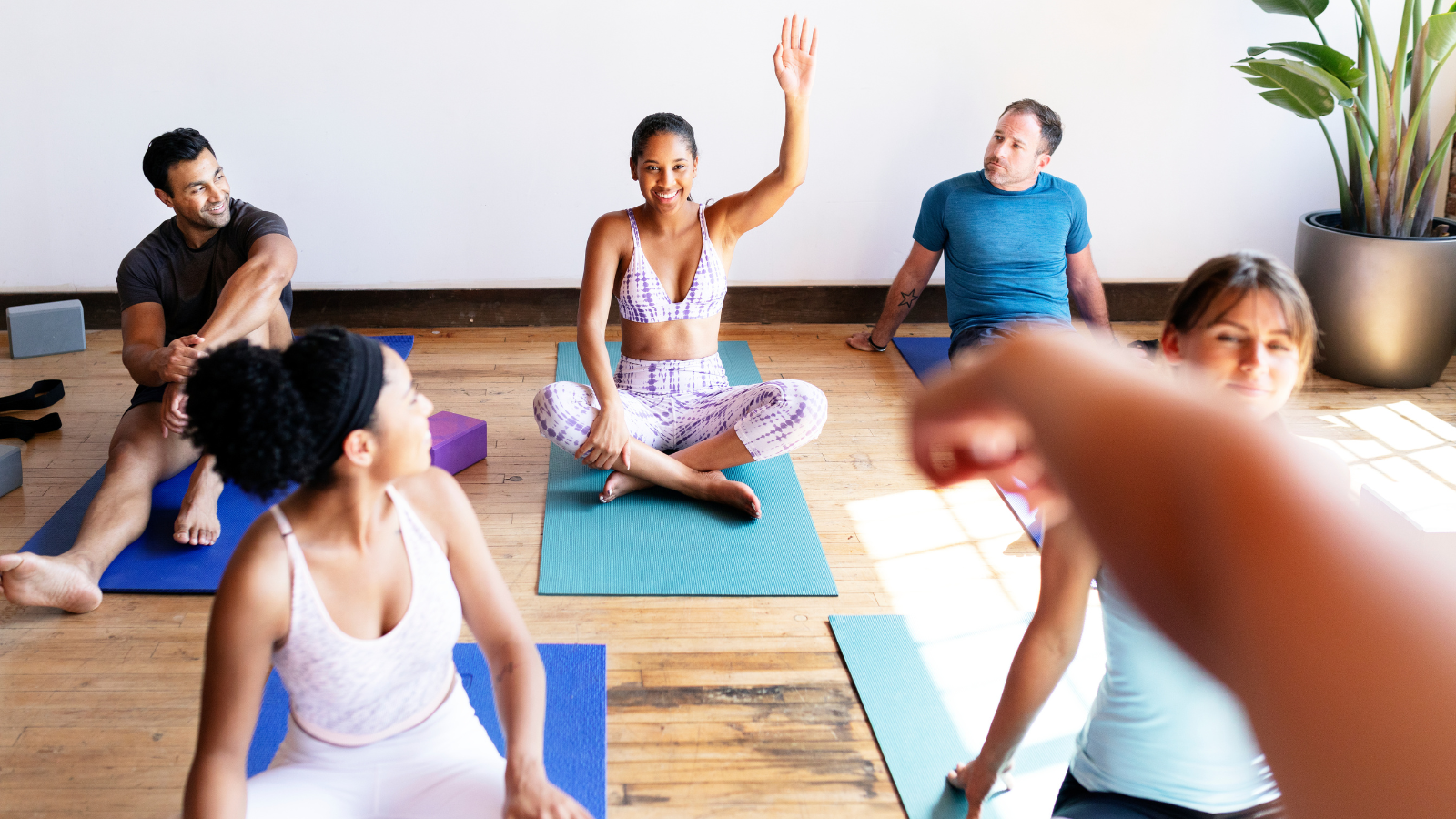
As yoga teachers, we may be the authority in the room on yogic philosophy or anatomy. But our knowledge and teaching experience does not make us experts on our students’ bodies. We can make it clear that all the postures and cues we suggest are mere suggestions. Ultimately, each student is in the driver’s seat of their own experience. That can mean following our lead, choosing to rest, or choosing a different posture to serve them better in the moment. This allows for a more collaborative class experience, making us each teachers in our own right.
4. Provide Options and Variations
To make class inclusive, it’s important to provide options and variations based on the energy and ability of the room. These options should be non-hierarchical, meaning one pose isn’t presented as being better or more advanced than another. If we are teaching Vrksasana (Tree Pose), for example, we can present all variations of the pose as equally acceptable options. This may include a seated variation of the pose (with one knee bent and the foot placed to the ankle or calf), a wall variation of the pose (with one hand placed at a wall for support), and the traditional variation of the pose (standing unsupported with the foot placed at the calf or inner thigh).
If we’re teaching mixed-level classes that include students with a wide range of abilities, it can be especially tricky to provide enough options to make all students feel engaged and included. But one way to do this is to reflect on the purpose of each pose as we’re sequencing. When we understand which muscles we are targeting and the energetic qualities of each posture, we can easily provide more accessible options if we see a student struggling with a pose. For example, if we want to teach a chair yoga class that embodies the qualities of Adho Mukha Vrksasana (Handstand), we can instead teach seated Urdhva Hastasana (Upward Salute), cueing students to focus on balance and core engagement.
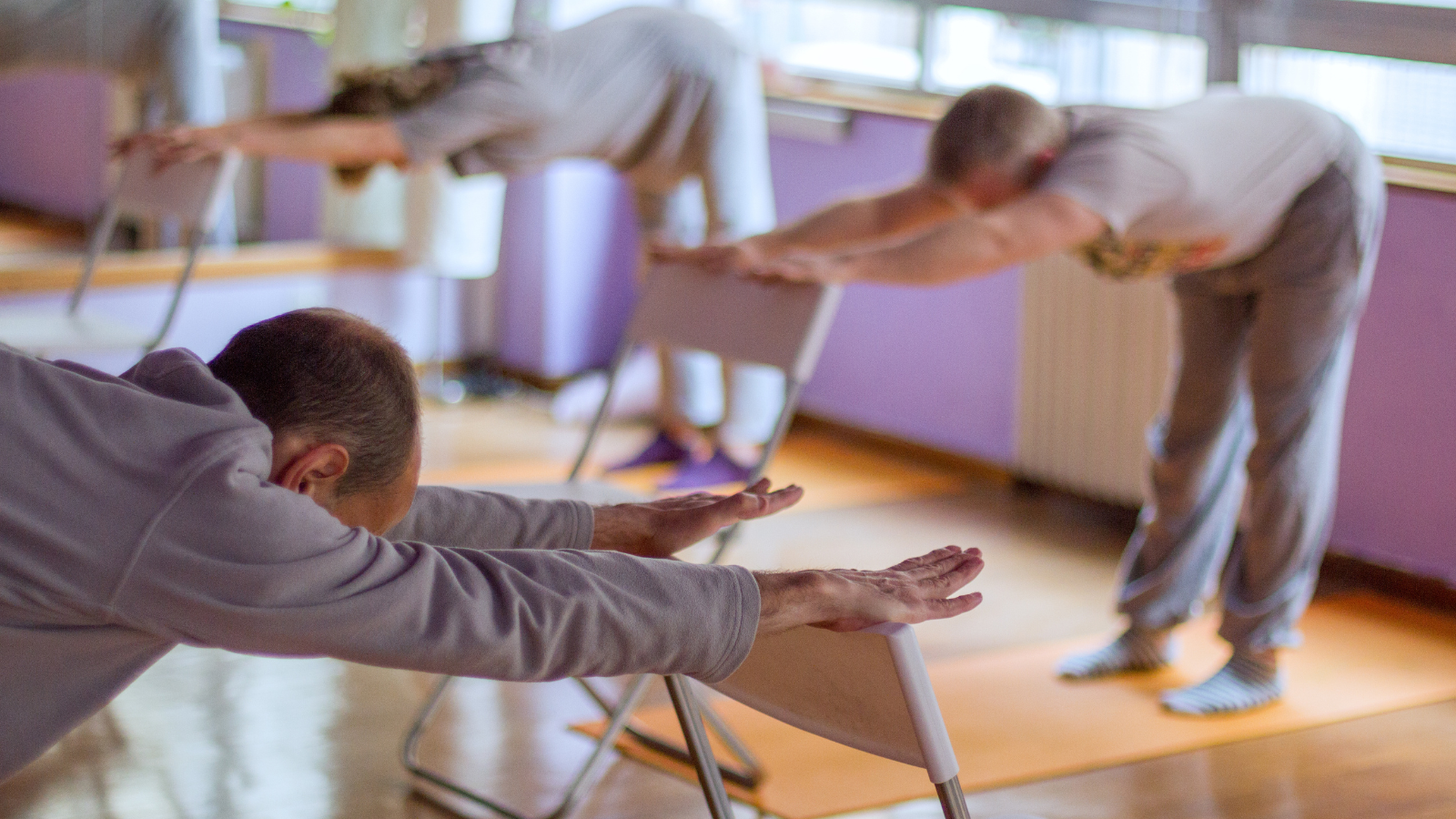
5. Remember: Yoga is More than Asana
Modern-day yoga classes are often hyper-focused on movement. But it’s important to remember that Asana (physical posture) is just one of eight limbs of yoga. To practice disability justice—to make our classes more accessible to all levels of physical ability—we can expand our teaching to include Pranayama (breathing), meditation, and basic teachings on ethics. These elements can be broken down to become approachable to students who are brand new to the practice. For example, to introduce meditation to beginning students, we can start with instructing one minute of focus on the breath. For beginning students, it’s important to emphasize it’s only human for the mind to wander, and when it does, we can gently guide it back to the breath.
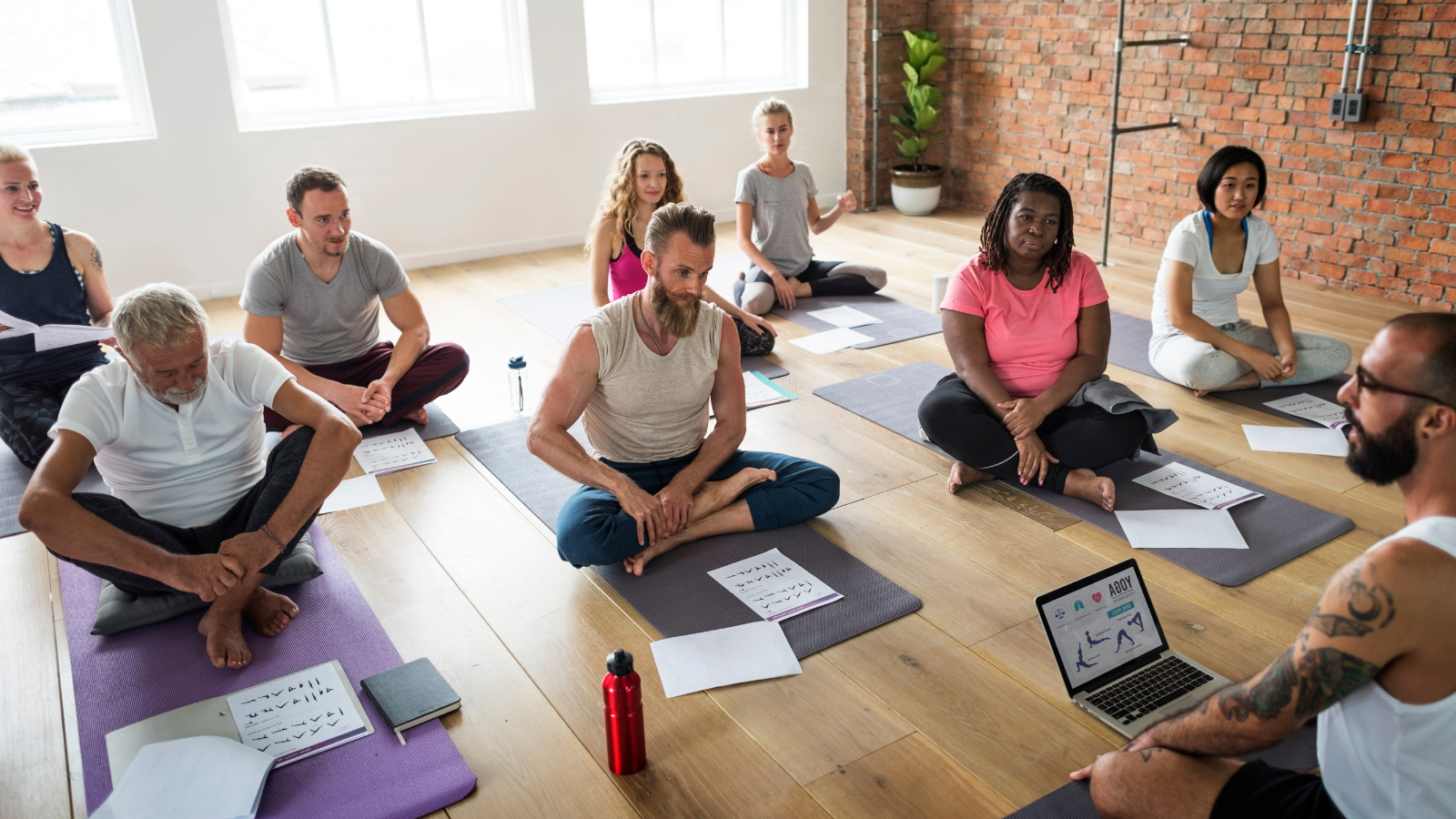
6. Uplift Role Models with Disabilities
Finally, we can include teachings about people who embody yogic principles but don’t fit the stereotypical yoga mold. Framing the practice with Ady Barkan’s story can be one way to show how we can embody the philosophical elements of yoga, like Seva to his mission of expanding healthcare to all and Abhaya (fearlessness) in the face of his ALS diagnosis.
Also, read...
Want to Feel Better? Just Breathe – The Power of Bhramari Pranayama (Humming Bee’s Breath)
Jan 06 – Baxter Bell, MD, eRYT 500, C-IAYT
The Health Benefits of Multi-Day and Intermittent Fasting Part 2
Mar 13 – Sarah Warren
Fasting for Health: What Are the Benefits?
Feb 26 – Sarah Warren
Related courses
Breath as Medicine: Yogic Breathing for Vital Aging
With Doug Keller
Yoga and Myofascial Release: Releasing Chronic Tension with the Bodymind Ballwork Method
With Ellen Saltonstall
Yoga and Detoxification: Tips for Stimulating Lymphatic Health
With Lisa Levitt Gainsley
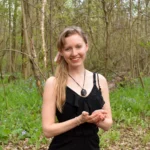
Lacey Ramirez writes for YogaUOnline and is an RYT-500 & ERYT-200 yoga teacher, global health researcher, and writer based in St. Louis. Through her work, she seeks to make yoga accessible, inclusive, and equitable.
Lacey discovered yoga as a tool for centering during her years as a competitive runner. Since then, yoga has served as a way to connect with her body throughout her experience of pregnancy and parenthood. She teaches because she hopes others can use this sacred practice for calming, healing, and transformation.
As a yoga teacher, Lacey specializes in teaching restorative, Yin, prenatal, and trauma-informed Vinyasa yoga. She has also completed birth doula and prenatal/postnatal barre certifications and trainings. Additionally, she holds a Masters of Science in Global Health and Population from Harvard T.H. Chan School of Public Health. To learn more and connect, visit her website laceyramirez.com
Related Resources
Be A Hero Organization: https://beaherofund.com/
Not Going Quietly: https://www.notgoingquietlyfilm.com/
Recent articles
Fascia and the Vagus Nerve: Healing from the Inside Out
Jul 10 – Dr. Arielle Schwartz
Change Your Perspective of Pelvic Tilting: How the Transversus Abdominis Can Help
Jul 08 – Olga Kabel C-IAYT
Warrior I Pose: 5 Strengthening Variations
Jul 02 – Bridget Frederick, eRYT 500
Categories
Upcoming courses
Breath as Medicine: Yogic Breathing for Vital Aging
With Doug Keller
Yoga and Myofascial Release: Releasing Chronic Tension with the Bodymind Ballwork Method
With Ellen Saltonstall
JOIN NOW!
Recent articles
Almost there...
Sorry, we couldn't find anything...
Stress Relief
Fascia and the Vagus Nerve: Healing from the Inside Out
Have you ever had a morning in which you woke up with a painful…
Jul 10 – Dr. Arielle Schwartz
Pose Library
Change Your Perspective of Pelvic Tilting: How the Transversus Abdominis Can Help
“Tuck your tailbone under” or “lengthen your tailbone” have long been among the most…
Jul 08 – Olga Kabel C-IAYT
Yoga Practice Tips
Warrior I Pose: 5 Strengthening Variations
Warrior I Pose (Virabhadrasana I) is an excellent pose for strengthening your whole back…
Jul 02 – Bridget Frederick, eRYT 500




